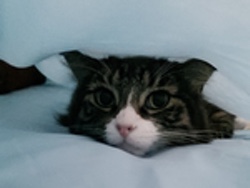Sea Otter Health
An invisible threat to Sea Otter Health
In the 19th century, when it was fashionable to wear otter fur, sea otters were hunted to near extinction. Today, they are considered endangered because of poaching, entrapment in fishing lines and nets, oil spills, pollution, and loss of kelp forests.
Toxoplasmosis is another threat to sea otters, but is naked to the eye. This parasite, which was only known to reproduce in cats, can cause fatal brain infections and can have devastating effects on the sea otter population. Even healthy sea otters are contracting this parasite. Infected domestic and wild cats shed the parasite in their droppings, which ultimately make their way to waterways.
Veterinarians have been wondering why sea otters are dying from toxoplasmosis. In 2016, the Wild Animal Health Fund funded a study that found that certain strains of the parasite are likely to be more deadly than others. This discovery will aid in rehabilitating infected sea otters.

An ounce of prevention is worth a pound of cure
Veterinarians were able to identify the parasite strain that is not only making sea otters sick, but also killing many. This information was added to existing research mapping the parasite in domestic and wild cats in central California. Veterinarians from both studies joined forces and together! The collaboration is providing concrete information that will help these animals. Veterinarians are able to target when, where, and what intervention strategies should be in place to reduce and control the land-sea connection of zoonotic pathogenic transmission.

Cat Owner? We love them too!
There are several things you can do to help sea otters. It is critical that cat litter/waste not reach our waterways. When you clean the litter box, don't flush the waste down the toilet! Instead, dispose of the waste in the trash. Do you have an outdoor cat? You can still help by providing a litter box for them to use outside. It is important to maintain it as you would an indoor box. This will help in detouring the outdoor cat from using the bathroom in areas that can ultimately pollute the surrounding waterways with toxoplasmosis.
